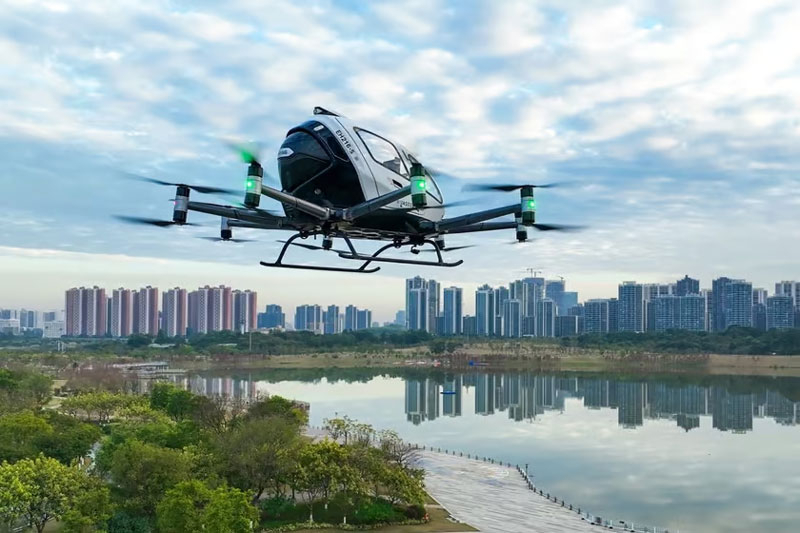Recently, the Chinese company EHang conducted unmanned flights of a two-seater air taxi EH216-S with a modified power system. Instead of traditional lithium-ion batteries, the device received solid-state lithium batteries with approximately double the energy density. This allowed the vehicle to stay in the air for about 50 minutes instead of the usual 25. It was also the world’s first flight of an aircraft with solid-state batteries.

Image source: EHang
The stated energy density of solid-state batteries approaches 500 Wh/kg. The battery anode is made of lithium metal, and “oxide ceramics” is declared as the electrolyte. The company intends to begin equipping all new air taxis with solid-state batteries towards the end of 2025. Time in the air will increase from 25 to 60 minutes, which will increase the flight range from 35 to 80 km at a cruising speed of 100 km/h.
The startup Shenzhen Inx Energy Technology Company is developing innovative solid-state batteries for EHang. An agreement on strategic cooperation between them was concluded in September 2023. In addition to significantly increased energy density, solid-state batteries are easier to operate, do not ignite if damaged, and support an impressive operating temperature range of -40 to 150 °C.
EHang has become the first company in the world to receive permission to produce and operate flying electric taxis. The cars are still being produced for travel companies, but they can be purchased at retail for $330 thousand in China and $410 thousand abroad.